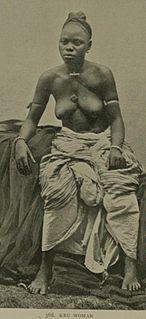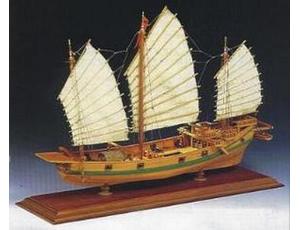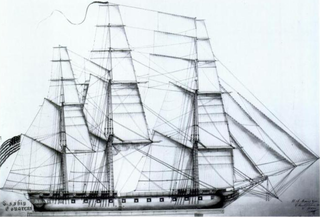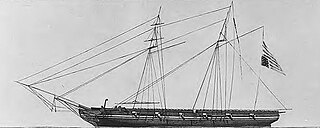Related Research Articles

Matthew Calbraith Perry was a commodore of the United States Navy who commanded ships in several wars, including the War of 1812 and the Mexican–American War (1846–1848). He played a leading role in the opening of Japan to the West with the Convention of Kanagawa in 1854.

The Kru or Kroo are a West African ethnic group who are indigenous to eastern Liberia and western Ivory Coast, they migrated and settled along various points of the West African coast, notably Freetown, Sierra Leone, but also the Ivorian and Nigerian coasts. The Kru people are a large ethnic group that is made up of many tribes from Liberia to Ivory Coast. These tribes include Bété, Bassa, Krumen, Guéré, Grebo, Klao, Krahn people and, Jabo people. The kru people were more valuable as traders and sailors on slave ships than as slave labor. To ensure their status as “freemen,” they initiated the practice of tattooing their foreheads and the bridge of their nose with indigo dye to distinguish them from slave labor.

John Rodgers was a senior naval officer in the United States Navy during its formative years in the 1790s through the late 1830s. He served under six presidents for nearly four decades. His service took him through many military operations in the Quasi-War with France, both Barbary Wars in North Africa, and the War of 1812 with Britain.

The first John Adams was originally built in 1799 as a frigate for the United States Navy, converted to a corvette in 1809, and later converted back to a frigate in 1830. Named for President John Adams, she fought in the Quasi-War, the First and Second Barbary Wars, the War of 1812, the Mexican–American War and the American Civil War. At the end of her career, she participated in the Union blockade of South Carolina's ports. She then participated in the raid on Combahee Ferry that Harriet Tubman, the former slave and Union operative, organized with Union colonel Montgomery. John Adams led three steam-powered gunboats up the Harbor River to Port Royal. The squadron relied on local black mariners to guide it past mines and fortifications. The squadron freed 750+ slaves and unsettled the Confederacy. Tubman was the first woman in U.S. history to plan and execute an armed expedition.

USS Saratoga, a sloop-of-war, was the third ship of the United States Navy to be named for the Battle of Saratoga of the American Revolutionary War. Her keel was laid down in the summer of 1841 by the Portsmouth Navy Yard. She was launched on 26 July 1842 and commissioned on 4 January 1843 with Commander Josiah Tattnall III in command.

The Pacific Squadron was part of the United States Navy squadron stationed in the Pacific Ocean in the 19th and early 20th centuries. Initially with no United States ports in the Pacific, they operated out of storeships which provided naval supplies and purchased food and obtained water from local ports of call in the Hawaiian Islands and towns on the Pacific Coast. Throughout the history of the Pacific Squadron, American ships fought against several enemies. Over one-half of the United States Navy would be sent to join the Pacific Squadron during the Mexican–American War. During the American Civil War, the squadron was reduced in size when its vessels were reassigned to Atlantic duty. When the Civil War was over, the squadron was reinforced again until being disbanded just after the turn of the 20th century.
Te Iʻi is a traditional province of Nuku Hiva, in the Marquesas Islands. The province covers slightly more than the western two-thirds of the island. The western coast is characterized by steep slopes which plunge directly into the sea, indented occasionally by small bays leading to short deep valleys leading to the interior.
USS Nonsuch was a moderately successful privateer built in 1812 and then an armed schooner in the United States Navy during the War of 1812. She was sold for breaking up in 1826.

The First Battle of Tabasco was fought during the Mexican–American War, in October 1846, in an attempt to capture cities along the Tabasco coast.

The East India Squadron, or East Indies Squadron, was a squadron of American ships which existed in the nineteenth century, it focused on protecting American interests in the Far East while the Pacific Squadron concentrated on the western coasts of the Americas and in the South Pacific Ocean. Part of the duties of this squadron was serving with the Yangtze River Patrol in China. The East India Squadron was established in 1835 and existed until it became part of the Asiatic Squadron in 1868.
The following are synopsis of the campaigns of the Mexican–American War (1846—1848).
The Dan are a Mande ethnic group from northwestern Ivory Coast and neighboring Liberia. There are approximately 700,000 members of the group and their largest settlement is Man, Ivory Coast. Neighboring peoples include the Krahn, Kpelle and Mano. They are officially known as Yacouba in Ivory Coast. In Liberia, they are also known as Gio, which is considered a derogatory exonym.

The Perry Expedition was a diplomatic and military expedition during 1853-54 to the Tokugawa Shogunate involving two separate voyages by warships of the United States Navy. The goals of this expedition included exploration, surveying, and the establishment of diplomatic relations and negotiation of trade agreements with various nations of the region; opening contact with the government of Japan was considered a top priority of the expedition, and was one of the key reasons for its inception.

The Battle of Ty-ho Bay was a significant naval engagement in 1855 involving the United Kingdom and United States against Chinese pirates. The action off Tai O, Hong Kong was to rescue captured merchant vessels, held by a fleet of armed war-junks. British and American forces defeated the pirates in one of the last major battles between Chinese pirate fleets and western navies. It was also one of the first joint operations undertaken by British and American forces.

The West Indies Squadron, or the West Indies Station, was a United States Navy squadron that operated in the West Indies in the early nineteenth century. It was formed due to the need to suppress piracy in the Caribbean Sea, the Antilles and the Gulf of Mexico region of the Atlantic Ocean. This unit later engaged in the Second Seminole War until being combined with the Home Squadron in 1842. From 1822 to 1826 the squadron was based out of Saint Thomas Island until the Pensacola Naval Yard was constructed.

The West Indies Anti-Piracy Operations refer to the United States Navy presence in the Antilles, and surrounding waters, which fought against pirates. Between 1817 and 1825, the American West Indies Squadron constantly pursued pirates on sea and land, primarily around Cuba and Puerto Rico. After the capture of Roberto Cofresi in 1825, acts of piracy became rare, and the operation was considered a success, although limited occurrences went on until slightly after the start of the 20th century.

The Nuku Hiva Campaign was an armed conflict between the United States and the Polynesian inhabitants of Nuku Hiva during the War of 1812. It occurred in 1813, following Captain David Porter's decision to sail his fleet to the island for repairs before continuing his raid against British shipping. Upon arrival, the Americans became involved in a tribal war and allied themselves with the Te I'i people against the Happah and Tai Pi clans.

The Ivory Coast expedition, or the Liberia expedition, was a naval operation in 1842, launched by the United States against the West African Bereby people. After the attacks on the merchant ships Mary Carver and Edward Barley, the American Congress approved a punitive expedition to the area and placed Commodore Matthew C. Perry in command. The expedition was successful in exacting redress by destroying the fortified town of Little Bereby and by killing the chief responsible for the attacks on American shipping.

USS Concord was a wooden-hulled, three-masted sloop-of-war of the United States Navy and was launched on 24 September 1828 from the Portsmouth Naval Shipyard in Kittery, Maine. She was the first US Navy vessel to bear the name 'Concord' and was so named after the town of Concord for its role at the beginning of the American Revolution. The vessel had a tonnage of 700. The Concord had a complement of 190 officers and seamen with an armament of 20 guns and saw service protecting American merchant ships and other interests in several places around the world. The ship and her crew, who also functioned as Marines, fought in the Seminole Wars in Florida. Concord ran aground while on a patrolling mission along the African coast. Despite determined efforts from the crew, with three losing their lives in the process, the Concord was unable to be refloated. It was the first ship christened by a woman. Sloop-of-war Concord, launched in 1827, was "christened by a young lady of Portsmouth." This is the first known instance of a woman sponsoring a United States Navy vessel. Unfortunately, the contemporary account does not name this pioneer female sponsor.
The 1985 Lahad Datu ambush was a series of robberies and random shootings that occurred on 23 September 1985 when 15–20 armed foreign pirates landed on the coast of Lahad Datu, Malaysia, and stormed the town. The pirates shot at random targets, killing at least 21 people and injuring 11 others, and stole some $200,000 from a local bank as well as another $5,000 from the Malaysia Airlines office.
References
- 1 2 3 Griffis, William Elliot (1887). Matthew Calbraith Perry. Boston: Cupples and Hurd.